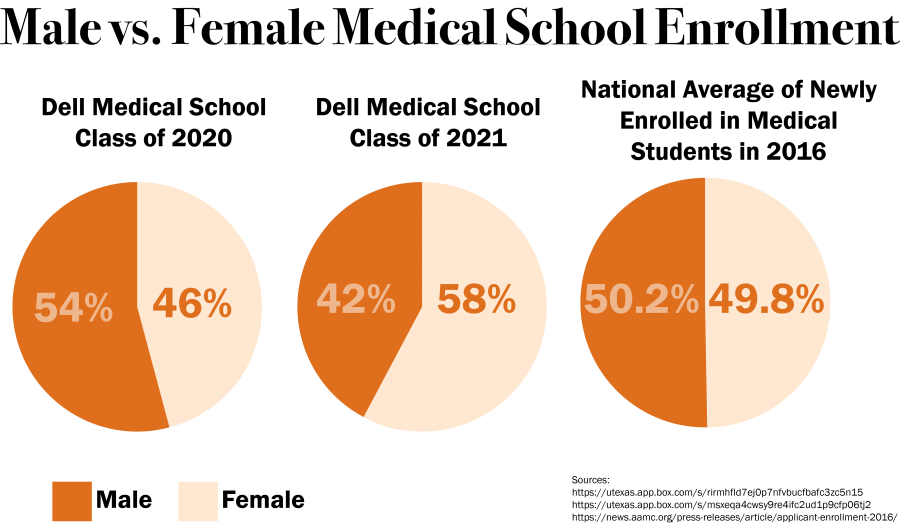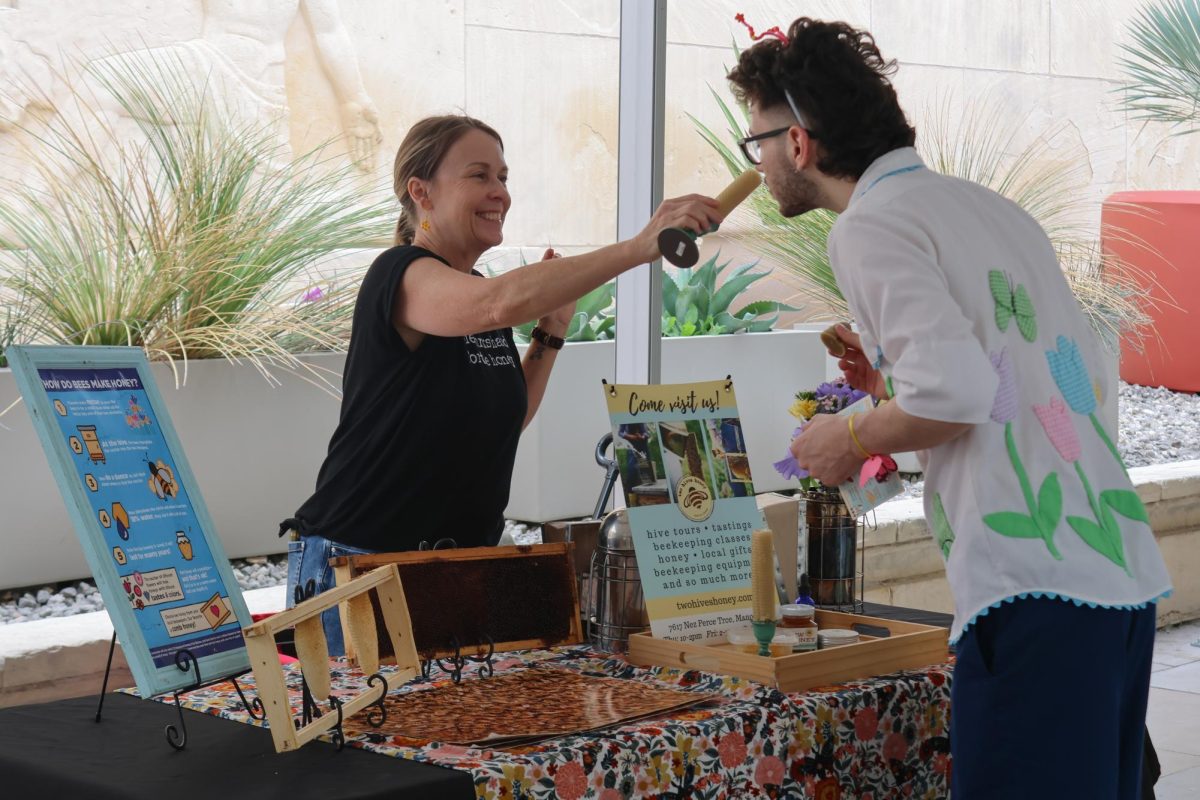As a mother of three and a Southern Methodist University advertising and French alumna, Mary Beth Bennett isn’t the typical first-year medical student. However, as a member of Dell’s Class of 2021, Bennett is now part of an unconventional class where females are dominating the classroom.
Dell’s second admitted class consists of 58 percent women and 42 percent men, according to data from Dell Medical School Student Affairs. Although Dell admits a small number of students, with 50 students admitted this past summer, the school’s demographics are notable compared to national averages. According to the Association of American Medical Colleges, of newly enrolled medical students in the country in 2016, 49.8 percent were women and 50.2 percent were men.
First-year medical student Hannah Rosenthal said she thinks Dell didn’t intentionally choose more women than men.
“Dell’s goal is … to rethink everything about health care … they went out (knowing) what they were looking for in a class, and whoever happened to have those characteristics, that’s who they choose, and (it) just happened to be 58 percent female,” Rosenthal said.
Dell director of admissions Joel Daboub said the difference could be because more women applied to Texas medical schools than men. Out of the applicants who hoped to start medical school in 2017, 2,840 were men and 2,878 were women, according to the Texas Medical and Dental Schools Application Service.
Dell’s admission process relies mainly on holistic review, which contributes to the school’s diverse student body, Daboub said. A holistic review allows committee members to look beyond a student’s academic career and see if they are engaged in other areas such as innovation, leadership and community engagement.
“It’s easier, especially when you have a lot of applications and you have a lot of seats to fill, to look at things that are easier to measure like GPA and MCAT,” Daboub said. “But I think you also miss a lot of interesting aspects of candidates’ past experiences that aren’t explained in those two numbers.”
Having received her bachelor’s degree in advertising and French in 2008, Bennett said her daughter motivated her to change her profession and go to medical school. Bennett said she hopes to inspire other women who may want to pursue medicine.
“I definitely see it as so important that you have women setting an example for future generations. Being an older person, I didn’t have a lot of influence on me growing up that I could be a physician,” Bennett said.




















